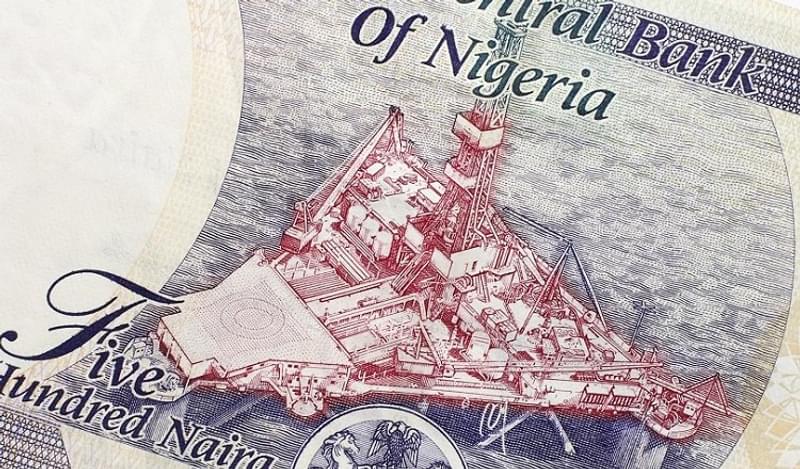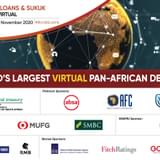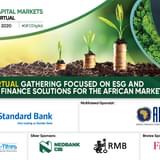What are some of the key strategic initiatives in place at Access Bank currently, both for the wider organisation and the finance team?
Our vision is to be recognized as the world’s most respected African banks and we have developed a long-term strategy that reflects our purpose and distinct advantages. Our strategic aspiration is to be a high performing diversified bank leader in any market segment we play in. So far, we are among the top three banks in Nigeria in terms of profitability as of September 2016.
We are executing several key strategic initiatives aimed at positioning us as Nigeria’s most preferred bank. We are strengthening and growing our retail and SME businesses: the large under-banked population and the fast emergence of SMEs in Nigeria presents numerous opportunities for the bank to grow its retail customer base and intensify low-cost deposit generation so as to lower funding costs and improve margins. Leveraging digital and innovation to meet customers’ needs: as FinTech increasingly disrupts the banking sector with exponential speed, bank leaders are focused on how to create new value propositions for their customers. We are exploring digital opportunities and establishing partnerships with FinTech companies to develop innovative products that will create value for our customers whilst unlocking new revenue streams. Driving hard on cost optimization: as macroeconomic contractions pressure the margins of banks, there is a need to implement strict cost management practices in order to boost bottom-line growth. At the beginning of 2015, the bank took a strategic step to reduce cost-to-income to 55%. As of June 2016, we recorded a CIR of 54%, which was in line with our guidance. Maintaining high quality risk assets: it is quite challenging maintaining a high-quality loan portfolio in an environment with economic uncertainty from the volatility of oil prices to the scarcity of FX. The bank’s robust risk management framework is focused on optimizing its asset portfolio mix, closely monitoring performance, especially its FX portfolio.
Access Bank was one of just two institutions to issue Eurobonds out of Nigeria in 2016. Can you take us through the deal in depth? What were some of the challenges faced in getting the deal done and how did your perception, and the perceptions on investors, evolve throughout the issuing process?
In 2016, Access Bank went to the market to exchange part of its 2017 bond and issue a new bond to mature in 2021. About US$300mn was raised, consisting of US$116mn exchange and US$184mn new liquidity. However, the deal was not without its challenges. Investors’ increasing concerns around the macro outlook and implementation of the new FX policy, as well as FX liquidity decline and the attendant impact on NPL levels in the banking industry was telling on the market. The Standard and Poor’s downgrade of the Nigerian Sovereign and the resultant effect on Access Bank’s rating a few weeks prior to the transaction added to the pressure of a successful transaction. The lack of FX liquidity in the local market elicited less interest in the exchange from the majority of local holders. The more preferred choice was to allow the bond run its course and mature in 2017, rather than exchanging for the new security
Regardless of the challenges, Access Bank’s credit was very well subscribed by investors. Confidence in the bank’s management was well reflected by the diversity of the investor base.
Has the country’s foray into currency reform had any impact on the Bank’s fundraising strategy?
The flexible exchange rate policy took effect in June 2016 leading to the devaluation of the Naira by as much as 36%. However, the currency reforms as well as various government initiatives are beginning to support inflows, although not yet at required levels. Access Bank’s successful US$300mn Eurobond issue was the first signal of returning investor interest in the market and paved the way for other potential dollar-denominated inflows into the country.
The bank has a 5-year strategy and inherent in this is a disciplined capital plan, which has helped the bank maintain a strong capital buffer over the years. The Eurobond demonstrated investor confidence in the bank’s fundamentals, particularly our proactive risk management, which led to our avoidance of risky exposures to key sectors. Among those are power and upstream oil and gas, where asset quality deterioration was largely concentrated in 2015 through to 2016.

In mid-2016 the Central Bank agreed to delay raising the capital adequacy ratio for the country’s Banks for fears of recession. Do you see capital adequacy emerging once again as an important theme among Banks like Access Bank this year?
The CBN originally increased capital requirements for the banking industry and categorised some banks as systemically important financial institutions (SIFIs) in 2015. For SIFIs, the minimum requirement was raised to 16% whilst other banks were required to maintain 15%. However, given the ensuing macro – economic environment that prevailed through 2016, the CBN postponed the enactment of the minimum requirement for SIFIs to July 2017. The implementation of the policy in the second half of the year is very likely as macro improves, with fiscal policies complementing the monetary framework.
Anticipating macro issues and their impact of liquidity and capital adequacy, the bank embarked on a capital accretion exercise in 2015, in order to create a stronger capital buffer. As of September 2016, CAR stood at 19%, well above the regulatory limit. We believe this continues to be an issue for the industry in the face of rising NPLs and devaluation concerns.
The adoption of new IFRS9 principles, the new financial reporting standard due for implementation in 2018, is expected to produce challenges for banks and financial institutions. What kind of work does the bank have to do in order to prepare for the standard’s introduction?
IFRS 9 is the most significant change to financial instruments recognition and measurement in many years and its implementation may present significant challenges for financial institutions. The adoption of the standard has significant implications on the bank’s operations, financial performance, impairment and financial reporting. In order to guarantee a smooth transition, the bank will ensure it has robust impact assessment and gap analysis capabilities, update relevant accounting policies, execute qualitative assessments and bolster historical and forward looking data collection. We will also install suitable upgrades for our existing IT infrastructure to meet the needs of the new accounting standard.
Credit exposure in Nigeria is much more concentrated in the large corporate segment despite a strong SME base in the country. What do you think needs to happen in order for this to change?
In the past few years the Nigerian scene has exploded with start-ups, expanding the SME segment significantly. However, a major impediment to banks’ lending to this budding sector is the inherent risk. A majority of SMEs in Nigeria lack a formal structure and typically operate on a sole proprietorship structure, so the governance framework required to evaluate the potential risk levels is lacking. The lack of a credit history also adds to the uncertainty of the customer’s overall risk of default. Finally, in a high interest rate environment such as this – the current Monetary Policy Rate is at 14% – it is often difficult for banks to provide the required financial assistance needed to boost small businesses, without some level of collateral or equity contribution, two conditions difficult for SMEs to provide.
However, the current Government, through the Central Bank, is focused on providing the right platform for SME growth and development primarily through the disbursement of intervention funds.
The MSME Development fund is a NGN220bn on-lending scheme which provides low cost funding for start-ups; the Anchor Borrower Scheme – the government is keen to increase food production. This scheme gives farmers the chance to enhance their skills and production levels of key food items such as rice, while the Federal Ministry of Finance / IFC Collateral registry gives room for movable assets to be used as collateral in the disbursement of funds.
On the subnational front, States such as Lagos, a model with a high percentage contribution of Internally Generated Revenue (IGR), is also a keen start-up supporter with schemes to support various enterprises, including a NGN25bn Employment Trust Fund.
Access Bank has found avenues to lend to the sector without compromising its moderate risk appetite. Through the acquisition of a large-scale retail franchise in 2011, the bank inherited a large retail customer base, thus providing the leverage to explore opportunities in the SME space. Subsequently in 2013, the bank created the Business Banking division with the primary focus of identifying and exploring opportunities within the bank’s corporate value chain in order to serve SMEs. By doing this, the risk of default was largely mitigated.
Last year saw a severe erosion of the Nigerian economy. How did that impact the bank? And how does the bank expect the economy to perform in 2017?
The economy’s erosion in 2016 was largely as a result of dwindling oil prices, which had a ripple effect on the country’s foreign reserves, creating a 36% devaluation and FX shortage. At the same time, fiscal and monetary policies required to support the macro were inefficient or lacking. The banking industry was undoubtedly affected as asset quality deteriorated with NPLs largely concentrated in key sectors such as power and oil & gas upstream.
During the same period, Access Bank recorded one of the lowest non-performing loan ratios in the industry as a result of our strong risk management culture and the ensuing adherence to our risk acceptance criteria. We took proactive steps to de-risk the loan book, by avoiding significant investments in the aforementioned sectors and winding down our exposure on the FX trade book, thus enabling us avoid significant NPLs during the period.
The macro pressures may likely remain for the most part of 2017. Oil production fell to 1.63 million barrels per day in the third quarter last year, down from 1.69 million in the second quarter. This was largely due to attacks on the country’s oil infrastructure by militants. Violence in the Niger delta will almost certainly continue to limit oil production in 2017, but we expect that the pace of the contraction of output will ease significantly.
Over the year, the naira has a seen drastic depreciation in value, moving from NGN197 per US dollar to NGN282 at the launch of the current “floating” foreign exchange policy in June, 2016. The local unit is likely to trade within a narrow range at the interbank as the monetary regulator continues to provide liquidity to support the naira. Expected improvement in investor sentiment will buoy FX liquidity and support the currency.
Ongoing disruptions to the country’s gas infrastructure have severely curtailed power supply, while issues implementing cost-reflective tariffs have posed significant impediments to sustainable electricity supply. To respond adequately to the current challenges threatening Nigeria’s electricity sector, the federal government would in consultation with the World Bank, launch a power sector recovery plan soon. Though no precise date or financial size of the recovery plan has been disclosed, it was however gathered that the decision to launch an electricity sector recovery plan was shared with stakeholders during a recent exclusive meeting the government organized.
Nigeria has said it is seeking to borrow US$4bn in total from the World Bank and other foreign institutions and US$1bn through Eurobonds to plug a yawning budget deficit and fund badly needed infrastructure projects. Success in securing these loans will go a long way in overhauling the infrastructure deficit.
US export trade in goods with Nigeria declined to US$1.42bn in 2016 from a peak of US$6.39bn in 2014. About 20% of total capital importation to Nigeria comes from the US - on average this amounts to US$203.8mn. This will have impact on the bank in terms of LC financing and trade related fees and commission
The three planned hikes in 2017 will add to liquidity pressures already being experienced by the Nigerian economy, drive interest payments up, possibly worsen naira volatility and increase cost of funds
Policy uncertainty in China could lead to further weakness in private investment, financial market stress and rising regional disruption. Commodity exporters would feel the impact of weakening activity
Brexit is also cause for concern. About 48% of capital importation to Nigeria comes from the UK, about US$484.4mn could be at risk if Brexit impacts negatively on the UK economy. Access Bank’s UK franchise could be affected as well.
Finally, increasing risk of political upheavals, arising from inconclusive election outcomes or transition to new political party in countries where we have subsidiaries – in Ghana and Gambia, for instance.









